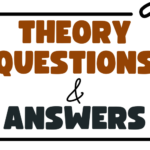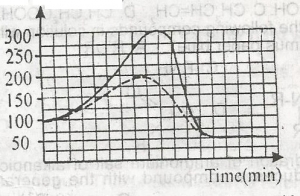The website has the complete lesson note for all the subjects in secondary school but this piece showcases the SS2 Chemistry Lesson Note on Activation Energy and Collision Theory. You can use the website search button to filter out the subject of interest to you.
CLICK HERE to download the complete Document: DOWNLOAD HERE
TOPIC: CHEMICAL REACTIONS
CONTENTS:
- Basic concept (Activation energy) and
- Introduction to collision theory.
- Factors affecting rate of chemical reactions.
- Types of chemical reactions – Endothermic and Exothermic.
PERIOD 1: BASIC CONCEPTS: REACTANTS AND PRODUCTS
Chemical reactions can be represented simply on paper by chemical equations involving only formula and symbols e.g.
4NH3(g) + O2(g) → 4NO(g) + 6H2O(g)
Reactants Products
Reaction time: The total time taken for a particular reaction to take place.
Reaction rate: is the number of moles of reactions converted or product formed per unit time. Unit is moldm-3s-1
In all chemical reactions, existing bonds in the particles of the reactants must be broken first before new bonds can be formed to form products. The breakings of bonds require energy. An initial energy input is required to activate the reactant particles. This energy is the activation energy of the reaction. The activation energy of a reaction is equivalent to that energy barrier that must be overcome before bonds are broken to enable the reaction to occur. Hence, activation energy can be defined as the minimum amount of energy required for a reaction can occur. When this activation is acquired by the reactant particles, they form complex particles of high energy content. This complex particle is known as the activated complex. Therefore activated complex is an unstable molecule with high energy contents which gives the product It is unstable because of its high energy content and so will readily decompose to give the products or the reactants, depending on the nature if the reaction.
EVALUATION
Define activation energy.
PERIOD 2: INTRODUCTION TO COLLISION THEORY
The collision theory was developed from the kinetic theory of gases to account for the influence of concentration and temperature on reaction rates. The theory is based on the following postulates:
- Reactions occur as a result of the collision of reactant particles.
- A reaction results only if collision attains certain minimum energy. This minimum energy is called activation energy.
- Collision will not give rise to a reaction unless the colliding particles are correctly oriented to one another.
- The rate of reaction is proportional to the number of effective collisions. A collision is said to be effective if the energy of the colliding molecules is greater than or equal to the activation and the molecules are correctly oriented to one another.
The collision theory assumes that for a chemical reaction to occur there must be collisions between reactant particles.
Click on the Downloadable Button to get the FULL NOTE






